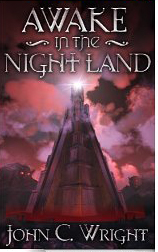Beware, fair reader! Be not slain by the baneful sneer of Reader X, The Condemner of Covers!
So who is Reader X? And why does he condemn books with less-than-professional-looking covers? If you would keep yourself—and your book—from so dire a fate, read on!
I have a great many friends who are published by small publishing companies or who self-publish their own books. Once upon a time, I handed a small press book written by a friend to another friend whom, for the sake of this article, we shall call: Reader X.
Reader X — is he preparing to read? Or to sneer?
(We call him Reader X because of the X shaped mask he wears to hide his identity from the characters in the books he’s reading. Actually, Reader X as he appears here is an amalgamation of more than one friend, but we will treat him as one person for the purposes of this article.)
Reader X hated the book.
This happened twice, maybe three times. Reader X no longer wants to read books written by friends of mine. In fact, he is now suspicious of all small press books.
What’s more, Reader X has the keen eye of an eagle. He can pick out small press books at a hundred paces.
After a little while, I realized that I, too, could pick out small press books instantly…because they just didn’t look as good at “real” books. They looked low-quality.
When I myself decided to become a small press author, I found myself asking: what is it that makes these books stand out to me? What could I do better, so that my book does not scream low quality and make the Reader Xs of the world instantly sneer?
And, worse than sneer, refuse to buy!
The first and most obvious answer is: bad cover art.
Your cover is your introduction, your invitation to the author to come into the world of your story. If the cover art looks bad, cheesy, or awkward, readers like Reader X are never going to give the book a chance. Other readers might not care, but why eliminate the Reader X’s of the world from our audience, when a little care and effort can keep them in our fold.
Reader X buys a lot of books.
The first thing that screams not a profession book is bad cover art. So, the first step is to find a good cover image. This can be done a number of ways:
1) Old paintings – all old paintings are in the public domain. That means you can use their image for your cover. If an old painting or artistic image fits your book, you have an instant classic look that, in and of itself, will not frighten away Reader X.
[Correction: some old paintings are owned by museums. But prints of them from public domain books are not. Still, worth checking if you wish to use an old painting. ]
2) Photographs – there are many stock sights where you can buy photos. There are also fantasy photo designers who will design a photo. Some I spoke to cost around $500…but there are probably cheaper ones. There are many, many sources of such people. You can Google them. Goodreads has many people who do covers, etc.
Also there are many sites that offer photos for free. Here, for instance, is a link to the photography info on a website called Savvy Writers and e-books. If you page down, there are several articles that include lists of places to look for free photos:
http://savvybookwriters.wordpress.com/category/photography/
3) Commission a cover painting – this is an idea option for many books…but you have to be careful. Bad paintings look worse than anything else, except perhaps bad photoshopping. In particular, human figures that are distorted or not in proper proportion can be really off-putting. So, if you are going to go to the trouble of having a real cover painting, make certain that the artist you pick can produce a pleasing human image.
This last point cannot be stressed too strongly. Human images out of perspective and photoshopping that doesn't trick the eye are worse–much much worse–than a simple solid cover with lettering on it. Do not pick a cover image that will turn away more readers than it draws!
So…Now, you have a decent cover image. Everything is great, right?
Not quite.
At first, I thought cover art was the key. Good art, good cover, right?
Wrong.
How do I know this? Let us return to Reader X. One day, Reader X and I were at the bookstore. There was a mix of big house and small press books presented on the shelf before us. Reader X was perusing the big house books and sneering disdainfully at the small press books. (Reader X is actually far too kind to sneer, but sneering gets the point across more quickly that looking slightly uncomfortable and shuffling quickly away.)
Reader X sneered with infinite disdain at a small press book with dull, flat cover art. Then he picked up a second book.
To my surprised, I noted that the cover art on the second book was just as dull and flat as the first one. It may have been the least interesting cover art I’ve ever seen on a big house book. And yet, despite the dullness of the art, this second book did not scream LOW QUALITY.
I gaped at it: Why was that?
An artist friend was the one who gave me the first clue. He complained about the font on a friend’s book.
Fonts. Titles. Revelation arrived. It was not the art that had been screaming LOW QUALITY at us in the bookstore.
It was the lettering.
At first, I thought it was just which font was used. But the problem with that is you can find big house books with widely varying fonts. They still look like high quality books.
So it was not just the font.
What was I missing?
The second clue came from my cover artist, Dan Lawlis. When not painting covers for my books, he is a commercial artist. He also used to draw for Marvel and DC. He taught me the rule: Don’t let the lettering touch the art.
Now, I know what you are thinking. (I’m using my new brain-power magnifier to read thoughts in the future.) You are thinking: I can hardly afford a bag of tea. How, in creation, do you expect me to pay to invent anti-grav to make my letters hover over my cover art?
To which I will reply: That’s not what I meant.
It is not that the lettering cannot be on any part of the picture, but that it should not cover the main images.
Why?
Because subconsciously, our eye knows the difference between order and sloppiness. Think of how you feel when you see a poster where the words squished against one side. You know it wasn’t planned. The person ran out of room. You eye, your mind, immediately knows that was not a properly done job.
Keeping the lettering from covering the important images in the art gives readers, such as Reader X, an impression of order and good planning.
High quality book covers do this.
Notice how much better it looks when the T is not touching the finger.
(I mean the lettering, not the blue vs. purpleness of the print. ;-)
So, now we have good art and good letter placement. Yet still, something wasn’t right. I could find small press books that would cause an instant Reader X sneer, and yet both the images and the placement was fine.
What was the final missing link?
It was the good folks at Castalia House who found the final key.
Contrast.
The number one thing that small press and self-published books do wrong—the number one difference between them and big house covers—is lack of contrast.
This is what made it so that Reader X tossed his disdainful sneer in the direction of one dull cover and not the other: Lettering Contrast.
Same font (on top). Same image.
Yet, note how much cleaner the cover looks with the stronger contrast.
The number one thing that the big house art departments do that the smaller ones don’t is: make sure the lettering on the cover is legible.
Because, you know, you might want the reader to be able to read the title of the book.
Just because.
Contrast…both of the lettering and the image itself…is one of the number one things that small-press covers do wrong. The first thing Reader X’s eye picks up in the bookstore is the contrast or lack thereof of the book and lettering.
The lower the contrast, the greater the sneer.
There is a trick for checking if your contrast is good. Attach the cover art to an email and send it to yourself. Then, look at the thumbnail that gmail (or whatever your email service) offers. This is the size that your book cover will be on many websites.
Can you read the title clearly and easily?
If so, you’re good.
If not, those looking at your book online won’t be able to read it either.
And Reader X won’t buy it.
In conclusion, there are three things you need to do if you want to avoid the condemning sneer of Reader X and possibly hook him in as a reader with your snazzy book cover:
1) Good Clean Art
It doesn’t have to be fancy, but it should be properly proportioned and not look too drab or fakey.
2) Wise Placement of Lettering.
Don’t just slaver the letters all over the cover like jam on a crumpet. Make sure they look as if they were meant to go with the images in the art.
3) Strong Contrast.
The lettering should be clear and easy to see. The art image also should be clear and easy to see.
Do these three things and even a simple cover will win the approval, and maybe even the dollars, of Reader X!








